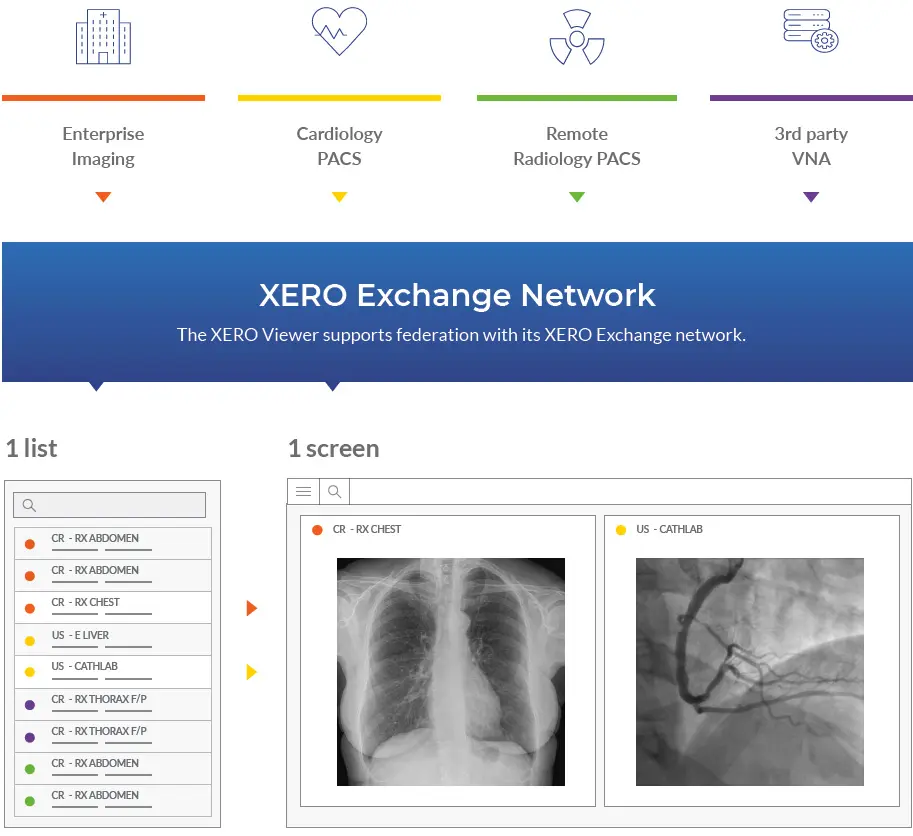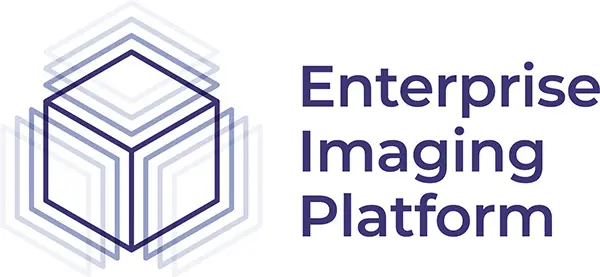Enterprise Imaging accessible.
From one single place.
Interview with Jason Knox,
Solutions Manager Enterprise Imaging at Agfa HealthCare
Images are everywhere in a patient’s care – crossing departments, specialties and even locations. More than ever, healthcare providers need a longitudinal view of the patient’s entire imaging record. And it should be easily accessible, from a single place.
That place is the enterprise viewer. But how do you make sure you get all the benefits and possibilities of a truly enterprise, truly universal viewer? What is the connection between the enterprise viewer and the EHR? And how can seamless integration capability enable your enterprise viewer to play an even bigger role in virtual collaboration and consultation?
 We sat together with Jason Knox, Solution Manager Enterprise Imaging at Agfa HealthCare to find answers to all these questions. Jason is an expert in clinical visualization and has been guiding leading health organizations optimizing their workflows utilized across the enterprise for inclusion of images in the patient’s longitudinal image record.
We sat together with Jason Knox, Solution Manager Enterprise Imaging at Agfa HealthCare to find answers to all these questions. Jason is an expert in clinical visualization and has been guiding leading health organizations optimizing their workflows utilized across the enterprise for inclusion of images in the patient’s longitudinal image record.
Enterprise Imaging is defined in so many ways by different people or organizations.
What does it mean to you?
Jason Knox: To start with, I think the collaborative HIMSS-SIIM member workgroup has done a very good job of defining Enterprise Imaging as “A set of strategies, initiatives and workflows implemented across a healthcare enterprise to consistently and optimally capture, index, manage, store, distribute, view, exchange, and analyze all clinical imaging and multimedia content to enhance the electronic health record.”
For me personally, the priority is on the impact on to the end user. So, while of course Enterprise Imaging includes technologies such as VNA and diagnostic PACS for radiology and cardiology, I am most interested in the enterprise viewer as a starting point. The patient care continuum today crosses many different imaging boundaries – departments, service lines, locations. But the hundreds and thousands of enterprise users want a single place to view the patient’s entire imaging record, in a longitudinal view. And the enterprise viewer – ideally embedded in the EHR – delivers that.
Across imaging borders, your enterprise viewer can help you create a longitudinal imaging record, viewable from a single screen, accessible right in your EHR.
What should a hospital or health system consider when choosing an enterprise viewer?
Jason Knox: When choosing a viewer, you need to approach the criteria from two sides: the technical aspects and the user experience. From the technical perspective, you want to make sure the enterprise viewer is HTML5, because this offers the most flexibility. Secondly, it has to provide flexible, powerful and seamless integration capability.
On the user side, the enterprise viewer must be intuitive, easy to use and easy to navigate. This is a platform that will be used by an enormous number of different people, and you don’t want to try to roll out training services for all of them.
At the same time, the enterprise viewer needs to be powerful. It is going to be utilized by high-level groups, such as orthopedic surgeons, vascular surgeons, etc. They need advanced functionalities: measurement capabilities, MIP, MPR, 3D, etc. So the viewer has to offer the power and tool sets they require.

What about EHR integration? Health systems spend enormous sums on their EHR. They want their healthcare providers to fully adopt and use it. How should an enterprise viewer be integrated with an EHR to help achieve this?
Jason Knox: In a word, it has to be seamless. Because you don’t want a situation where the user has to launch yet another window or app, searching yet again for the patient in another system, then finding the results they need… It’s too many mouse clicks and too much wasted time. Our customers tell us they want to see automated results inside the EHR. The below image shows a mockup of how any EHR, EMR, patient portal or physician portal could be integrated with the enterprise viewer. An HTML5-based viewer, like our XERO Universal Viewer, enables that very flexible integration capability. You can embed it in almost anything, without the user realizing where the viewer starts and ends. They just simply see that the EHR has a viewer.
To get a timeline view of all images, including radiology images, cardiology images, white light images, ECG, etc., does the hospital need a VNA? In other words, a centralized place where all these images are located?
Jason Knox: That is probably one of the most misunderstood aspects of Enterprise Imaging. While a VNA is certainly a critical part of your overall enterprise strategy, it isn’t necessarily required to get that timeline view.
However, in this case your viewer must not only meet the HTML5 and integration capabilities, but also support true federation, enabling the web viewer to reach out to multiple backend systems, query them and stream images to the front end simultaneously. The end user doesn’t care or need to know where these images reside: in a PACS or a VNA, in an Agfa HealthCare or a third-party system, local or remote. As long as the viewer can reach out to these backend systems simultaneously it can build that image timeline without the need for a central VNA. With the XERO Exchange network, our XERO Viewer can do this.
Enabling the Creation of the Longitudinal Imaging RecordFrom Across Departments, Systems and Locations

The patient’s care cycle now spans not only different departments within the hospital, but also different sites within a health system – and sometimes even other health systems. To keep that patient care cycle consistent from an imaging standpoint, collaboration is key. Do viewers have any inherent collaboration capabilities?
Jason Knox: Collaboration is indeed very important. Our XERO Universal Viewer supports very dynamic collaboration, including instant messaging capabilities and screen sharing. Two healthcare providers can instant message and consult on an exam in real time. A physician who needs a second opinion can share a link to bring the other physician to the same exam, and they can see the same screen. But we are also taking that ‘standard’ level of functionality to the next level, especially to meet the increased need for virtual collaboration and consultation, due to the COVID-19 pandemic. For example, one customer in the UK wanted to enhance the collaboration capability within their health system by leveraging XERO and Microsoft Teams. So, with our professional services team we built a tight integration with R&D and professional services between Microsoft Teams and XERO. The user simply clicks a little icon, and they can share the study they are looking at to a dedicated COVID Channel in Microsoft Teams, made up of specialists working on the pandemic, such as epidemiologists, radiologists, cardiologists, etc. The shared content and patient treatment can then be discussed and reviewed live, and group members can add comments later. We can see other applications for this functionality, beyond COVID-19, such as multidisciplinary team meetings, tumor boards, etc. There are plenty of opportunities! Read more about this case here.
The shared content and patient treatment can then be discussed and reviewed live, and group members can add comments later.
To learn more on the XERO Universal Viewer and the Enterprise Imaging Platform, visit the Agfa HealthCare website


